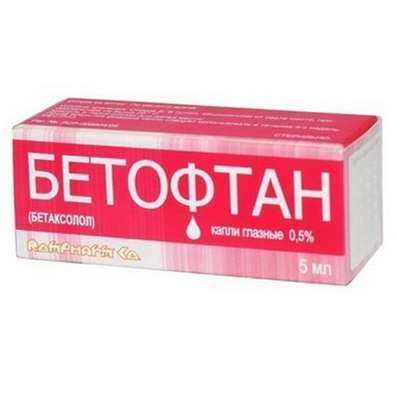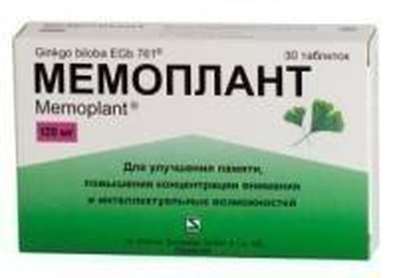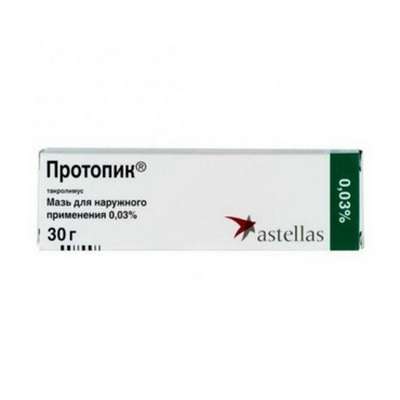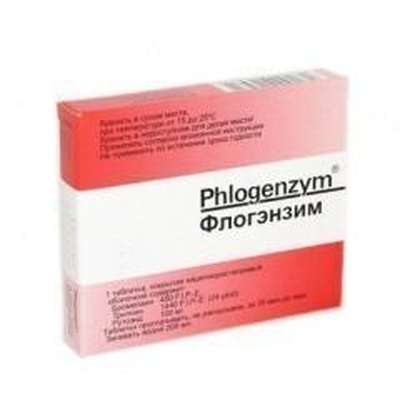Instruction for use: Hydroxyzine
I want this, give me price
The Latin name of the substance Hydroxyzine
Hydroxyzinum (genus. Hydroxyzini)
Chemical name
2- [2- [4 - [(4-Chlorophenyl) phenylmethyl] -1-piperazinyl] ethoxy] ethanol (as dihydrochloride or embonate)
Gross formula
C21H27ClN2O2
Pharmacological group:
Anxiolytics
The nosological classification (ICD-10)
F10.3 Abstinence: Alcohol withdrawal syndrome; Abstinence syndrome; Abstinence syndrome with alcoholism; Abstinence; Alcohol abstinence; Alcohol withdrawal status; Alcohol withdrawal syndrome; Postabstinctive disorder; Post-abstinence condition; Hangover syndrome; Abstinence syndrome; Alcohol abstinence syndrome; Alcohol withdrawal syndrome; Abstinence condition
F41 Other anxiety disorders: Anxiety status; Anxiety; Chronic alarm; Sense of anxiety; Anxious-hypothetical states; Stopping an alarm; Nonpsychotic anxiety disorders
F41.1 Generalized anxiety disorder: Generalized anxiety disorders; Generalized alarm; Phobic neurosis; Anxiety reaction; Anxious neurosis
F45 Somatoform disorders: Psychosomatic disorder; Psychosomatic disorders; Psychosomatic diseases; The state of excitement in somatic diseases; Functional psychosomatic disorders of the cardiovascular system
F48 Other neurotic disorders: Neurosis; Neurological diseases; Neurotic disorders; Neurotic condition; Psychoneurosis; Anxious-Neurotic Conditions; Chronic neurotic disorders; Emotional reactive disorders
L29 Itching: Itching with partial obstruction of the biliary tract; Dermatitis itchy; Dermatosis with persistent itching; Other itching dermatoses; Itching dermatoses; Itching allergic dermatosis; Itching dermatitis; Itching dermatosis; Itching itch; Excruciating itching; Severe itching; Endogenous itching; Skin itching with dermatosis; Restricted itchy dermatitis; Itching of the skin; Itchy scalp; Itching eczema
R45.1 Anxiety and agitation: Agitation; Anxiety; Explosive excitability; Internal stimulation; Excitability; Excitation; Excitation acute; Psychomotor agitation; Hyperexcitability; Motor excitement; Cessation of psychomotor agitation; Nervous excitement; Restlessness; Night trouble; Acute stage of schizophrenia with excitation; Acute mental agitation; Paroxysm of excitation; Overexcitation; Increased excitability; Increased nervous excitability; Increased emotional and cardiac excitability; Increased agitation; Mental arousal; Psychomotor agitation; Psychomotor agitation in psychoses; Psychomotor agitation of an epileptic nature; Psychomotor paroxysm; Psychomotor fit; Symptoms of excitation; Symptoms of psychomotor agitation; The state of agitation; A state of anxiety; Excitation status; A state of heightened concern; The state of psychomotor agitation; Conditions of anxiety; Excitation conditions; The state of excitement in somatic diseases; Excitation level; Feelings of anxiety; Emotional arousal
R45.4 Irritability and anger: Neurosis with increased irritability; Outbursts of anger; Anger; Resentment; Increased irritability; Increased irritability of the nervous system; Irritability; Irritability in neuroses; Irritability in psychopathic disorders; Symptoms of irritability; Dysphoria
Z100 * CLASS XXII Surgical practice: Abdominal surgery; adenomectomy; Amputation; Coronary angioplasty; Angioplasty of the carotid arteries; Antiseptic skin treatment for wounds; Antiseptic Hand; Appendectomy; atherectomy; Balloon coronary angioplasty; Vaginal hysterectomy; The coronary bypass; Interventions in the vagina and cervix; Interventions on the bladder; Intervention in the mouth; Restoration and reconstructive surgery; Hand hygiene of medical personnel; Gynecologic surgery; Gynecological intervention; Gynecological surgery; Hypovolemic shock during operations; Disinfection of purulent wounds; Disinfection of wounds edges; Diagnostic intervention; Diagnostic procedures; Cervical Diathermocoagulation; Long-surgery; Replacing the fistula catheters; Infection in orthopedic surgery; Artificial heart valve; cystectomy; Short-term outpatient surgery; Short-term operation; Short surgical procedures; Krikotireotomiya; Blood loss during surgery; Bleeding during surgery and in the postoperative period; Kuldotsentez; laser photocoagulation; laser coagulation; retinal laser coagulation; Laparoscopy; Laparoscopy in Gynecology; CSF fistula; Small gynecological operations; Small surgical procedures; Mastectomy and subsequent plastic; mediastinotomy; Microsurgical operations on the ear; Mukogingivalnye operation; suturing; Minor surgery; neurosurgical operation; Immobilization of the eyeball in ophthalmic surgery; testectomy; pancreatectomy; Perikardektomiya; The period of rehabilitation after surgery; The period of convalescence after surgery; Percutaneous transluminal coronary angioplasty; Pleural thoracentesis; Pneumonia postoperative and posttraumatic; Preparation for surgical procedures; Preparation for surgery; Preparation of the surgeon's hands before surgery; Preparation of the colon for surgical procedures; Postoperative aspiration pneumonia in neurosurgical and thoracic surgery; Postoperative nausea; Postoperative bleeding; postoperative granuloma; postoperative shock; The early postoperative period; myocardial revascularization; Radiectomy; gastric Resection; bowel resection; uterine Resection; liver Resection; enterectomy; Resection of part of the stomach; Reocclusion of the operated vessel; Bonding tissues during surgical procedures; Removal of sutures; Condition after eye surgery; Condition after surgery; Condition after surgery in the nasal cavity; Condition after gastrectomy; Status after resection of the small intestine; Condition after tonsillectomy; Condition after removal of the duodenum; Condition after phlebectomy; Vascular surgery; Splenectomy; Sterilization of surgical instruments; Sterilization of surgical instruments; sternotomy; Dental surgery; Dental intervention in periodontal tissues; strumectomy; Tonsillectomy; Thoracic surgery; Thoracic surgery; total gastrectomy; Transdermal intravascular coronary angioplasty; Transurethral resection; Turbinektomiya; Removal of a tooth; cataract surgery; Removal of cysts; tonsillectomy; Removal of fibroids; Removing the mobile primary teeth; Removing polyps; Removing broken tooth; Removal of the uterus body; Removal of sutures; Fistula likvoroprovodyaschih ways; Frontoetmoidogaymorotomiya; Surgical infection; Surgical treatment of chronic limb ulcers; Surgery; The surgery in the anal area; The surgery on the colon; Surgical practice; The surgical procedure; Surgical interventions; Surgery on the gastrointestinal tract; Surgical procedures on the urinary tract; Surgical procedures on the urinary system; Surgical intervention of the genitourinary system; Surgical procedures on the heart; Surgical manipulation; surgery; Surgery on the veins; Surgical intervention; Vascular surgery; Surgical treatment of thrombosis; Surgery; cholecystectomy; Partial gastric resection; hysterectomy; Percutaneous transluminal coronary angioplasty; Percutaneous transluminal angioplasty; Coronary artery bypass; tooth Extirpation; Extirpation of milk teeth; pulpectomy; pulsative cardiopulmonary bypass; tooth Extraction; teeth Extraction; cataract extraction; Electrocoagulation; endourological intervention; episiotomy; Etmoidotomiya; Complications after tooth extraction
Z60.0 Problems associated with adaptation to lifestyle changes: Adaptation; Correction of a daily biorhythm; Impaired adaptation; Adaptation disorders; Normalization of biological rhythms; Adaptation disorders; Adaptation disorder
Z98.8 Other specified post-surgical conditions: Purulent complications in the postoperative period; Suppurative complications of surgery; Postoperative liver dysfunction; Postoperative vomiting; Postoperative complications; Postoperative period; Early postoperative period
CAS Code
68-88-2
Characteristics of the substance Hydroxyzine
Hydroxysin hydrochloride is a white powder, odorless, very soluble in water, molecular weight 447.83.
Pharmacology
Mode of action - anxiolytic, H1-antihistamine.
Pharmacodynamics
Hydroxysin blocks H1-histamine receptors, has antimuscarinic and sedative effect, promotes suppression of activity of some subcortical zones.
In addition to H1-histaminoblock, it has bronchodilating and antiemetic effects, has a moderate inhibitory effect on gastric secretion. Hydroxysin significantly reduces itching in patients with hives, eczema and dermatitis.
Improves cognitive functions, including attention and memory. Does not cause addiction, mental dependence and withdrawal syndrome with prolonged use.
With hepatic insufficiency, H1-histamine-blocking effect can be prolonged up to 96 hours after a single dose.
Has moderate anxiolytic activity.
Polysomnography in patients with insomnia and anxiety shows an increase in the duration of sleep, a decrease in the frequency of nocturnal awakenings after a single or repeated administration of hydroxyzine at a dose of 50 mg. Reduction of muscle tension in patients with anxiety was noted with a dose of 50 mg 3 times a day.
H1-histamine-blocking effect occurs approximately 1 hour after ingestion. Sedation occurs after 30-45 minutes.
Pharmacokinetics
Suction. After intake, the absorption is high, the value of Tmax is 2 hours. After taking an average dose of 50 mg Cmax in adults - 70 ng / ml.
After the IM single dose, 50 mg Cmax is 65 ng / ml.
Distribution. Hydroxysin is more concentrated in tissues than in plasma. The Vd value is 7-16 l / kg in adults. Hydroxysin penetrates the GEB and the placenta, concentrating more in fetal than in maternal tissues.
Hydroxysin penetrates well into the skin, while the concentrations of hydroxysin in the skin far exceed the concentrations in the blood serum both after a single dose and after repeated use. The plasma concentration of hydroxyzine does not necessarily reflect its binding to tissues or distribution in the skin.
Metabolism. Hydroxin is metabolized in the liver. Cetirizine - the main metabolite (45%) - is a blocker of H1-histamine receptors. Metabolites are found in breast milk.
Excretion. T1 / 2 in adults - 14 hours (range - 7-20 hours). The total clearance of hydroxyzine is 13 ml / min / kg. About 0.8% of the hydroxyzine is excreted unchanged through the kidneys. Cetirizine is excreted mainly in the urine, also in unchanged form (25% of the ingested or 16% of the IM dose of hydroxyzine).
Special patient groups
The elderly. In elderly patients, T1 / 2 was 29 hours, Vd - 22.5 l / kg. It is recommended to reduce the daily dose of hydroxyzine in the appointment of elderly patients.
Children under 1 year. In children, the total clearance is 2.5 times higher than in adults. The dose should be adjusted. T1 / 2 is 4 hours.
Children from 1 year to 14 years. T1 / 2 is 11 hours.
Liver failure. In patients with secondary liver dysfunction due to primary biliary cirrhosis, the total clearance was approximately 66% of the value recorded in healthy volunteers. In patients with liver disease, T1 / 2 increased to 37 hours, the concentration of metabolites in the serum was higher than in young patients with normal liver function. Patients with hepatic insufficiency are recommended to reduce the daily dose or the frequency of admission.
Renal insufficiency. The pharmacokinetics of hydroxyzine was studied in 8 patients with severe renal insufficiency (Cl creatinine (24 ± 7) ml / min). The duration of exposure to hydroxysin did not change significantly, while the duration of exposure of cetirizine was increased. To avoid any significant accumulation of cetirizine after repeated use of hydroxyzine in patients with impaired renal function, a daily dose of hydroxyzine should be lowered.
Application of the substance Hydroxyzine
Symptomatic treatment of anxiety in adults, psychomotor agitation, feelings of internal tension, increased irritability in neurological (generalized anxiety and adaptation disorder) and somatic diseases; Abstinence alcohol syndrome; Premedication and postoperative period (as part of combination therapy); Itching of allergic origin (symptomatic therapy).
Contraindications
Hypersensitivity to hydroxyzine and cetirizine, aminophylline or ethylenediamine; Porphyria; V / a, IV or SC introduction; pregnancy; The period of labor activity; lactation; Age to 1 year (with IM introduction) or 3 years (with oral administration).
Restrictions on the use
Myasthenia gravis; Hyperplasia of the prostate with clinical manifestations (including difficulty urinating); glaucoma; Dementia; Convulsive disorders, including epilepsy; Predisposition to arrhythmia, including electrolyte imbalance (hypokalemia, hypomagnesemia); Prolongation of the QT interval and / or cardiovascular diseases in the history (including heart failure, arterial hypertension); Use of drugs that can cause arrhythmia; Hyperthyroidism.
Application in pregnancy and lactation
Contraindicated in pregnancy and during childbirth.
For the duration of treatment, breastfeeding should be discontinued (metabolites are excreted into breast milk, see "Pharmacokinetics").
Side effects of the substance Hydroxyzine
Possible side effects are given below for body systems and frequency of occurrence.
Classification of WHO frequency of development of side effects: very often (≥1 / 10); Often (≥1 / 100, <1/10); Infrequently (≥1 / 1000, <1/100); Rarely (≥1 / 10000, <1/1000); Very rarely (<1/10000).
The most frequent adverse reactions were drowsiness, headache, blocking, dry mouth and fatigue.
From the immune system: rarely - hypersensitivity; Very rarely anaphylactic shock.
From the nervous system: very often - drowsiness; Often - headache, fatigue; Infrequently - dizziness, insomnia, tremor; Rarely - cramps, dyskinesia.
From the side of the psyche: infrequently - agitation, confusion; Rarely - hallucinations, disorientation.
From the side of the organ of vision: rarely - violation of accommodation, visual impairment.
From the heart: rarely - tachycardia; Frequency unknown - prolongation of the QT interval on the ECG, ventricular tachycardia of the "pirouette" type.
From the side of the vessels: rarely - a decrease in blood pressure.
From the respiratory system, chest and mediastinum: very rarely - bronchospasm.
From the digestive tract: infrequently - nausea; Rarely vomiting, constipation.
From the liver and biliary tract: rarely - a violation of functional liver tests; Frequency is unknown - hepatitis.
From the side of the kidneys and urinary tract: rarely - delay urination.
From the skin and subcutaneous tissues: rarely - itching, rash (erythematous, maculopapular), hives, dermatitis; Very rarely - angioedema, sweating, acute generalized exanthematous pustular eruption, erythema multiforme, Stevens-Johnson syndrome.
General disorders: rarely - hyperthermia, malaise.
In single cases, prolonged pain in the place of the / m introduction was noted.
The following side effects were observed when taking cetirizine - the main metabolite of hydroxyzine - thrombocytopenia, aggression, depression, tic, dystonia, paresthesia, oculogic crisis, diarrhea, dysuria, enuresis, asthenia, edema, weight gain and can be observed with hydroxyne.
Interaction
It is necessary to take into account the potentiating effect of hydroxyzine when combined with drugs that depress the central nervous system, such as narcotic analgesics, barbiturates, anxiolytics, hypnotics, alcohol. In this case, their doses should be selected individually.
Simultaneous application with MAO inhibitors and holinoblockers should be avoided.
The hydroquithine interferes with the pressor action of epinephrine and anticonvulsant activity of phenytoin, as well as the action of betagistin and drugs - cholinesterase inhibitors.
It was found that the use of cimetidine 600 mg twice a day increases serum hydroxysin concentration by 36% and reduces Cmax of cetirizine metabolite by 20%.
The effect of atropine, alkaloids of belladonna, cardiac glycosides, antihypertensive agents, blockers of H2-histamine receptors does not change under the action of hydroxyzine.
Hydroxysin is an inhibitor of the isoenzyme CYP2D6 and in high doses can be the cause of interaction with the substrates CYP2D6. Since hydroxysin is metabolized in the liver, one can expect an increase in its concentration in the blood plasma when used simultaneously with inhibitors of microsomal liver enzymes. Since hydroxyzine is metabolized by alcohol dehydrogenase and isoenzyme CYP3A4 / 5, it is possible to increase the concentration of hydroxyzine in the blood plasma when used with drugs potentially inhibiting the isoenzyme CYP3A4 / 5 (telithromycin, clarithromycin, delavirdine, stiripentol, ketoconazole, voriconazole, intraconazole, posaconazole and some HIV protease inhibitors , Including atazanavir, indinavir, nelfinavir, ritonavir, saquinavir, lopinavir / ritonavir, saquinavir / ritonavir, and tipranavir / ritonavir). However, inhibition of one metabolic pathway can be partially compensated by the work of another.
The simultaneous use of hydroxyzine with drugs that potentially can cause arrhythmia can increase the risk of prolonging the QT interval and the occurrence of ventricular tachycardia as pirouette.
The use of hydroxyzine concurrently with agents that have an ototoxic effect, for example gentamicin, can mask ototoxicity symptoms such as dizziness.
Hydroxyzine should be discontinued 5 days before the planned skin tests with allergens (see "Precautions").
Overdose
CNS disorders include nausea, vomiting, tachycardia, pyrexia, somnolence, impaired pupillary reflex, tremor, confusion or hallucinations. Subsequently, depression of consciousness, respiration, convulsions, lowering of blood pressure, arrhythmia can develop. Possible aggravation of coma and cardiopulmonary collapse.
Treatment: In case of oral administration, gastric lavage is performed with the preceding endotracheal intubation. It is possible to use activated carbon, however, data that indicate its effectiveness is not enough. It is necessary to monitor the status of the state of breathing and blood circulation by means of ECG monitoring, ensure adequate oxygenation, enter naloxone, dextrose (glucose), and thiamine; If it is necessary to get a vasopressor effect, norepinephrine or metaminol is prescribed, epinephrine should not be used. Cardiac activity and blood pressure should be monitored within 24 hours after the disappearance of symptoms.
In large doses, hydroxyzine can lead to an elongation of the QT interval and obvious changes in the ECG.
The use of analeptics is unacceptable.
There is no specific antidote. Hemodialysis is ineffective.
Routes of administration
Inside, IM.
Precautions for the substance Hydroxysin
While the use of drugs having m-anticholinergic properties and CNS depressants, hydroxyzine dose should be reduced.
Hydroxyzine can lead to a lengthening of the QT interval on the electrocardiogram, so the simultaneous use with other drugs that can disturb the heart's activity, may increase the risk of arrhythmias. It is assumed that the other drugs, which cause changes in the electrocardiogram (atropine, antiparkinsonian agents, lithium carbonate, quinidine, phenothiazines, procainamide, tricyclic antidepressants, thioridazine) can aggravate and amplify changes that may be caused Hydroxyzine, and increase the risk of sudden death. It is necessary to avoid the simultaneous use of two or more drugs prolonging the QT interval, due to the risk of additive effects, which can cause the development of potentially life-threatening severe cardiac arrhythmias.
In renal and / or liver failure, doses should be reduced.
In the elderly, the dosage should be selected individually, starting at half the minimum dose and adjusting in the recommended dosage range.
If it is necessary to set allergological tests or conduct a methacholine test, the use of hydroxyzine should be discontinued 5 days before the study to prevent the generation of distorted data.
During treatment with hydroxyzine, alcohol should be avoided.
Injectable forms of hydroxyzine are for intravenous injection only.
Impact on the ability to manage vehicles and mechanisms. Hydroxysin may impair the ability to concentrate and the speed of psychomotor reactions. The use of other sedative drugs can enhance this effect. Therefore, one should refrain from driving vehicles and practicing other potentially dangerous activities that require an increased concentration of attention and speed of psychomotor reactions.

 Cart
Cart





